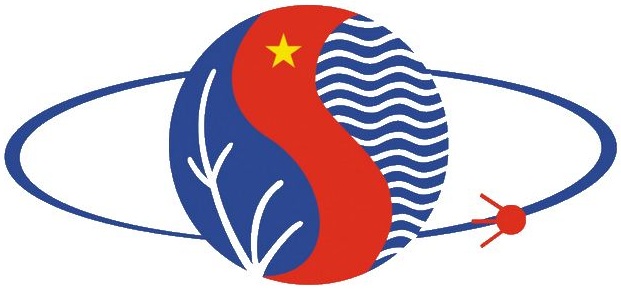Assessing the applicability of sentinel-2 remote sensing data to determine the bathymetry of a shallow coastal area: case study of Nhat Le Estuary, Quang Binh Province
Author affiliations
DOI:
https://doi.org/10.15625/1859-3097/22634Keywords:
Bathymetry, remote sensing, Nhat Le, Sentinel-2Abstract
Seabed mapping is complex and expensive because it is often performed in a harsh environment sensitive to weather factors. To overcome these limitations, there have been many studies on the application of remote sensing data to measure the seabed depth based on physical laws about the attenuation of reflected energy of light when passing through a water column. The value of reflected energy from the seabed on remote sensing images is used to determine the depth of the seabed. Worldwide, studies have been conducted on applying remote sensing data to measure seabed depth through the modeling and GEE cloud computing platforms. There are also studies in Vietnam that map the seabed topography for offshore islands. This paper measured the seabed depth based on experimental data, survey lines conducted in April and October 2018, and Sentinel 2 remote sensing images data for Nhat Le estuary area. The paper aims to review and evaluate the correlation and accuracy of the application of Sentinel-2 remote sensing image data to measure the depth of the seabed topography for shallow coastal waters. The results show that the correlation coefficient R2 along the surveyed lines is from 0.84 to 0.94, and the mean RMSE ranges from 0.70 to 0.74. The above assessment shows that surveyed lines that can be employed to interpret a larger area in the same satellite image scene using the empirical formula in the study area. The formula can also be used to determine the depth of bottom topography for other geographical areas with similarities in seawater turbidity and bottom material, as well as technical issues.
Downloads
References
[1] Q. Guo, C. Fu, Y. Chen, and Y. Zhang, “Application of multi-beam bathymetry system in shallow water area,” Journal of Physics: Conference Series, vol. 2428, no. 1, p. 012042, 2023.
[2] J. Gao, “Bathymetric mapping by means of remote sensing: methods, accuracy and limitations,” Progress in Physical Geography, vol. 33, no. 1, pp. 103–116, 2009.
[3] F. Eugenio, J. Marcello, and J. Martin, “High-resolution maps of bathymetry and benthic habitats in shallow-water environments using multispectral remote sensing imagery,” IEEE Transactions on Geoscience and Remote Sensing, vol. 53, no. 7, pp. 3539–3549, 2015.
[4] X. Guo, X. Jin, and S. Jin, “Shallow water bathymetry mapping from ICESat-2 and Sentinel-2 based on BP neural network model,” Water, vol. 14, no. 23, p. 3862, 2022.
[5] M. S. El-Sayed, “Comparative study of satellite images performance in mapping lake bathymetry: Case study of Al-Manzala Lake, Egypt,” American Journal of Geographic Information System, vol. 7, no. 3, pp. 82–87, 2018.
[6] D. Traganos, D. Poursanidis, B. Aggarwal, N. Chrysoulakis, and P. Reinartz, “Estimating satellite-derived bathymetry (SDB) with the Google Earth Engine and Sentinel-2,” Remote Sensing, vol. 10, no. 6, p. 859, 2018.
[7] A. P. Yunus, J. Dou, X. Song, and R. Avtar, “Improved bathymetric mapping of coastal and lake environments using Sentinel-2 and Landsat-8 images,” Sensors, vol. 19, no. 12, p. 2788, 2019.
[8] I. Caballero and R. P. Stumpf, “Towards routine mapping of shallow bathymetry in environments with variable turbidity: Contribution of Sentinel-2A/B satellites mission,” Remote Sensing, vol. 12, no. 3, p. 451, 020.
[9] G. Casal, J. D. Hedley, X. Monteys, P. Harris, C. Cahalane, and T. McCarthy, “Satellite-derived bathymetry in optically complex waters using a model inversion approach and Sentinel-2 data,” Estuarine, Coastal and Shelf Science, vol. 241, p. 106814, 2020.
[10] N. Thomas, A. P. Pertiwi, D. Traganos, D. Lagomasino, D. Poursanidis, S. Moreno, and L. Fatoyinbo, “Space-borne cloud-native satellite-derived bathymetry (SDB) models using ICESat-2 and Sentinel-2,” Geophysical Research Letters, vol. 48, no. 6, e2020GL092170, 2021.
[11] Z. Duan, S. Chu, L. Cheng, C. Ji, M. Li, and W. Shen, “Satellite-derived bathymetry using Landsat-8 and Sentinel-2A images: assessment of atmospheric correction algorithms and depth derivation models in shallow waters,” Optics Express, vol. 30, no. 3, pp. 3238–3261, 2022.
[12] P. Q. Yen, D. K. Hoai, and D. T. B. Hoa, “Research on bathymetry mapping of shallow water areas around islands in the Spratly Archipelago using deep remote sensing technology,” VNU Journal of Science: Earth and Environmental Sciences, vol. 33, no. 4, pp. 63–73, 2017.
[13] V. T. Tran, and C. T. Diem, “Research on technical solutions using GNSS-RTK technology in the construction of super high-rise buildings in Vietnam,” Journal of Surveying and Cartography, no. 42, pp. 39–43.
[14] T. T. Tung and D. N. Quang, “Analysing the causes of prolonged flooding in the Nhat Le river basin due to the historical flood in 2020,” Journal of Water Resources & Environmental Engineering, vol. 81, pp. 82–90, 2022.
[15] N. T. Hai, T. Nghi, and N. V. Bach, “Sedimentary characteristics and evolution of sand formations in the coastal strip of Quang Binh province,” Journal of Geology, no. 281, pp. 30–40, 2004.
[16] A. Pacheco, J. Horta, C. Loureiro, and Ó. Ferreira, “Retrieval of nearshore bathymetry from Landsat 8 images: A tool for coastal monitoring in shallow waters,” Remote Sensing of Environment, vol. 159, pp. 102–116, 2015.
[17] A. Pope, T. A. Scambos, M. Moussavi, M. Tedesco, M. Willis, D. Shean, and S. Grigsby, "Estimating supraglacial lake depth in West Greenland using Landsat 8 and comparison with other multispectral methods," The Cryosphere, vol. 10, no. 1, pp. 15–27, 2016.
[18] X. Monteys, P. Harris, S. Caloca and C. Cahalane, “Spatial prediction of coastal bathymetry based on multispectral satellite imagery and multibeam data,” Remote Sensing, vol. 7, no. 10, pp. 13782–13806, 2015.
[19] J. D. Hedley, A. R. Harborne and P. J. Mumby, “Simple and robust removal of sun glint for mapping shallow‐water benthos,” International Journal of Remote Sensing, vol. 26, no. 10, pp. 2107–2112, 2005.
[20] R. P. Stumpf, K. Holderied, and M. Sinclair, “Determination of water depth with high-resolution satellite imagery over variable bottom types,” Limnology and Oceanography, vol. 48, no. 1, pt. 2, pp. 547–556, 2003.
Downloads
Published
How to Cite
Issue
Section
License
Copyright (c) 2025 Vietnam Academy of Science and Technology

This work is licensed under a Creative Commons Attribution-NonCommercial-NoDerivatives 4.0 International License.








